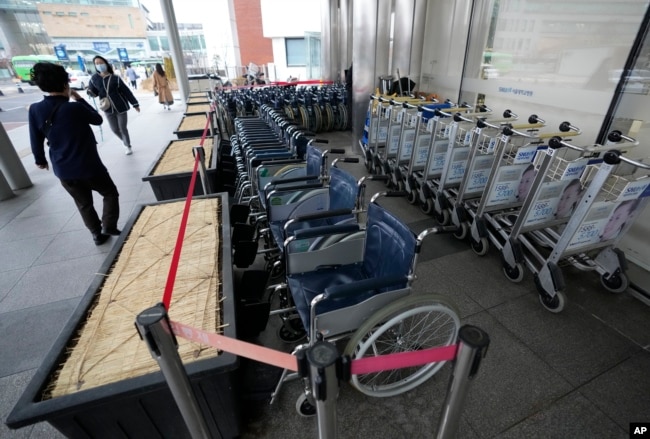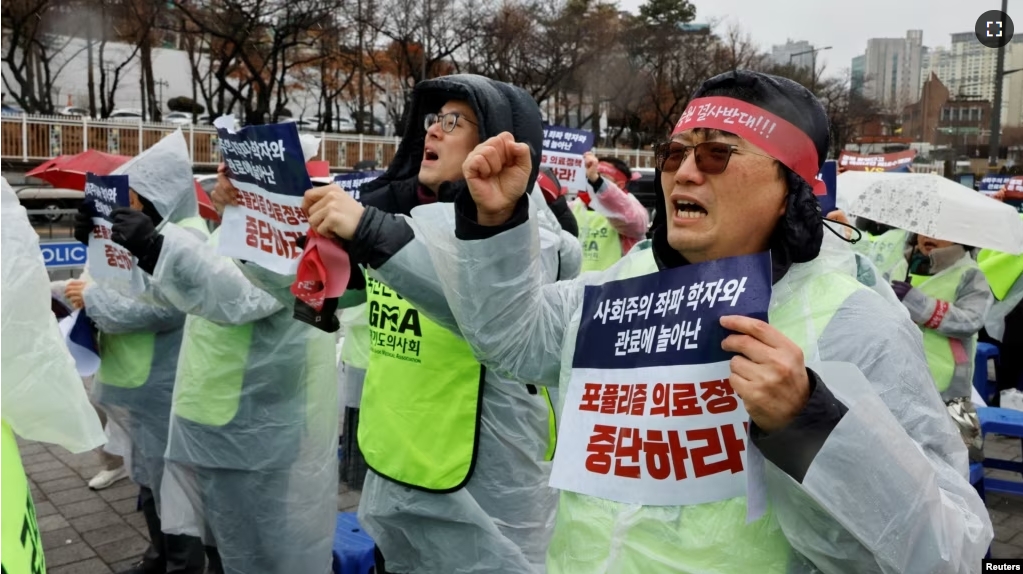South Korea’s biggest hospitals canceled medical procedures and turned away patients seeking emergency care on Wednesday. The moves came after thousands of trainee doctors walked off the job to protest a government plan to increase the number of people admitted to medical school.
One hospital, the Asan Medical Center in Seoul, had a sign saying its emergency division was only taking heart attack cases. The emergency departments at four other major hospitals were also on “red alert.” That means they did not have room for more patients.
“It is so frustrating that the resident doctors’ strike is happening now,” the brother of a cancer patient told the newspaper JoongAng Ilbo. He added that he and his brother had spent 10 hours looking for a hospital bed.
The health ministry says 7,813 doctors have walked out of their jobs since protests began this week. The doctors object to a plan by the government to increase the number of medical students. The plan aims to bring more health workers to rural areas and meet the demands of one of the world’s most quickly aging societies.
The government wants to increase the number of medical students from 3,000 to 5,000 by the 2025 school year. It aims to add up to 10,000 more by 2035.
The protesters, however, say South Korea has enough doctors. They say the government needs to improve the pay and working conditions of doctors before increasing the number of medical students.
South Korea’s population of 52 million had 2.6 doctors per 1,000 people in 2022. Those numbers are far below the average of 3.7 doctors per 1,000 people for developed countries in the Organization for Economic Co-operation and Development.
Public opinion studies in South Korea show many Koreans support the government plan. Last week, a Gallup Korea study said about 76 percent of South Koreans back the government’s plan to increase the number of medical students.

One group taking part in the protest called the plan a political measure ahead of a general election in April.
“We couldn’t just sit back and watch medical policies built only for the sake of winning the general election,” the Korea Interns and Residents Association said in a statement.
Local media said between one-third and half of scheduled surgeries at five major hospitals have been canceled due to the walkout.
The protests have continued despite a government order for the doctors to return to work.
Vice Health Minister Park Min-soo told reporters, “The basic calling of medical professionals is to protect the health and lives of the people, and any group action that threatens that cannot be justified.”
Safety Minister Lee Sang-min later threatened the protest leaders with possible arrest.
“The police and the prosecutors’ office will consult and take measures against any group or individuals who are leading collective action, including arrest and investigation,” he said.
I’m Ashley Thompson.
Hai Do adapted this story for Learning English based on Reuters news reports.
______________________________________________
Words in This Story
frustrating – adj. causing feeling of anger and annoyance
resident – n. a doctor in training
society – n. people in a particular country
for the sake of – phrase, out of consideration or regard
prosecutor – n. a lawyer who represents the government or the side accusing someone of a crime
consult – v. look for information
